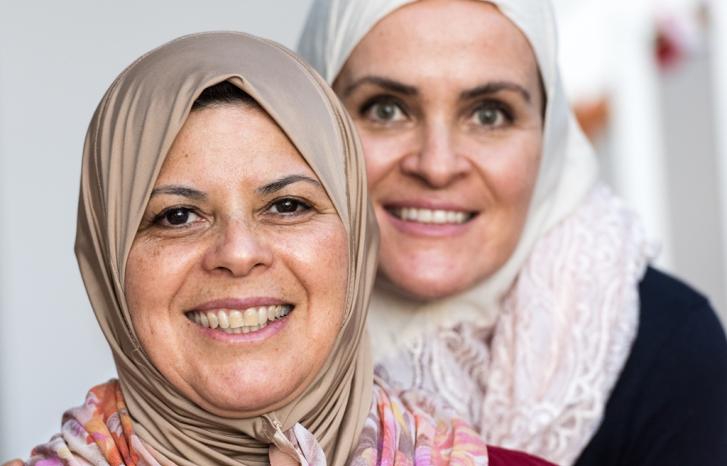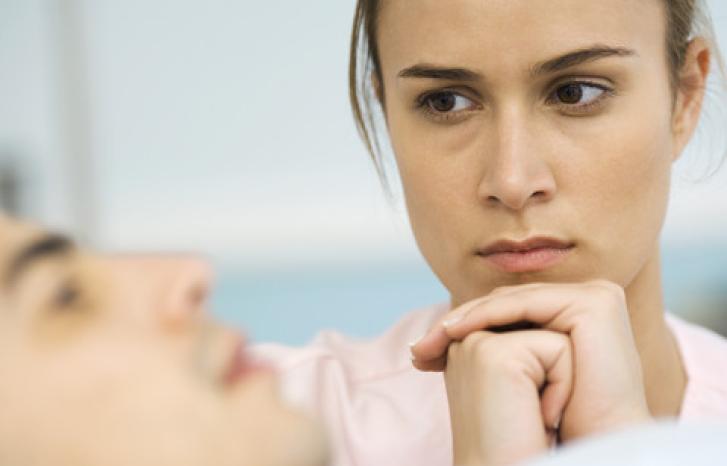If you live in one of the more gender equal countries in Europe, the chances of having high quality of life are about twice as big as for those living in one of the less gender equal counties.
Moreover, the chances of depression, divorce, or becoming a victim of violent death are smaller. This applies to both men and women.
Based on an examination of a major database of statistics gathered from various equality indexes, Øystein Gullvåg Holter is able to conclude that a high degree of gender equality has positive effects not only on women; it also benefits men.
“It is a common misunderstanding that increased gender equality provides benefits and privileges for women at the expense of men’s benefits and privileges,” says Holter
Bu this is not the case at all.
The Spirit Level
In 2010, researchers Richard Wilkinson and Kate Pickett created news headlines with the book The Spirit Level (“Ulikhetens pris” in Norwegian). In their book, they show that small wage disparities in society is good not only for the poorest classes, it also has positive effects on society as a whole.
Holter has applied Wilkinson and Pickett’s theory in order to investigate whether the same may be said about gender equality. In other words, does increased gender equality only have positive effects on women, or does men also benefit?
More gender equal countries score much higher on well-being and lower on depression among both men and women.Health profit with gender equality
“Within welfare research, a lot of attention has been paid towards wage disparities in society, which is good, but I was unsatisfied with the way gender equality was neglected,” says Holter.
In order to say something about the effect of gender equality he has collected data from a number of countries and states in Europe and the U.S. and created a new database: Gender Equality Statistics. His results are based on comparisons between average scores in the most and least gender equal countries in Europe and the most and least gender equal states in the U.S.
When Holter studies health, he means health in a broad sense. When measuring health, he has looked at factors such as welfare, depression, divorce, fertility, suicide, and violent deaths.
Holter points out that there are some major discrepancies in his figures, however. Not everybody benefits equally from gender equality. Nevertheless, the figures imply that the majority live better lives in more gender equal countries and states.
Holter’s statistics show that more gender equal countries score much higher on well-being and lower on depression among both men and women.
The more gender equal the society is, the likelihood of being victim of violent death also decreases significantly. In the most gender equal countries this likelihood is almost half that of the least gender equal countries. Furthermore, the figures show that this is related to income disparities. I you’re a man, small income disparities mean less likelihood of suffering a violent death.
Statistics also show that there is more gender balance in the suicide rate in gender equal countries. In the less gender equal societies, men are much more likely to commit suicide than women are.
Fertility disparities between Europe and the U.S.
One of the areas in which Holter found significant disparities between the European countries and the U.S. was within fertility.
In this area, positive findings are not measured in terms of the amount of children; a stable and so-called sustainable birth rate of approximately two children per woman is considered optimal.
The countries that have been most affected by the financial crisis are also the ones in which men participate least in unpaid care work.
Holter found a positive correlation between fertility and level of gender equality in the European countries. His data from the U.S., on the other hand, showed a slight negative correlation – the more gender equal states had lower birth rate.
According to Holter, this can partly be explained by the different gender equality models in Europe and the U.S. The European welfare model is more child friendly than the American gender equality model, in which the focus is to get women out on the job market.
See also: Why Norwegian birth rates are higher than in the rest of Europe
The chicken or the egg?
The data show the same tendency as the effect of increased wage equity. A high degree of gender equality has positive effects on society as a whole.
“Both equal pay end gender equality have roughly the same positive effects on welfare. At the same time, gender equality is also an independent factor. It appears that gender equality has equally strong effects on health and welfare as wage equity has,” says Holter.
“One proviso is that we don’t know which is the chicken and which is the egg, or what is the cause and what is the effect. We don’t know whether the gender equality situation is the cause of better health patterns, but the association is interesting in itself,” he maintains.
Neither do statistics take the major internal variations within countries and states into consideration, nor historical variations. They provide a snapshot from 2010, the year the data were collected.
Men important for gender equality
Holter also has figures showing men’s participation in unpaid care work such as childcare, housework and care of elderly parents. Here he found a clear connection between men’s participation and the country’s level of gender equality.
“This shows that men’s contribution is important in order to obtain gender equality,” says Holter.
The differences are big from country to country: In Europe, men’s participation at home in the most gender equal countries is almost three times that of the least gender equal countries.
“It is not without significance that the countries that have been most affected by the financial crisis are also the ones in which men participate least in unpaid care work,” Holter maintains.
“The level of men’s participation at home has an effect on society as a whole.”
According to Holter, the connection between gender equality and the distribution of unpaid care work is supported by thorough research. He has carried out qualitative studies on the topic himself, and made the same observations.
Men’s participation at home seems to be an important underlying factor in order to achieve more gender equality. Yet this factor is not included in the major gender equality indexes.
“Indexes such as Gender Gap Index and the Social Watch Gender Equality Index should include data that shed light on men’s contributions to gender equality, as well as the benefits and disadvantages increased gender equality have for men,” says Holter.

Gender equality as a feminist cause
But if it’s true that more gender equality has such obvious advantages for men, why don’t the men enter the barricades and fight for more gender equality?
Holter speculates that this has to do with men not being aware that high quality of life is connected to gender equality.
“The advantages I have found related to gender equality are underlying tendencies that appear when you use statistics. They mightn’t be as obvious for people in everyday life,” he says.
He also points to the fact that both men and women still consider gender equality a feminist cause, something primarily for the benefit of women. Positive effects on men are more often attributed to men’s own accomplishments.
One reason for this understanding may be that both research and the public debate on gender equality primarily revolve around women. Holter refers to it as the “gender trap”; at international conferences, it often takes only two minutes until the discussion is all about women, he maintains.
It is important that within health and welfare studies, we not only study health in a gender perspective, but also the effect of gender equality on health.
According to Holter, however, we are much further ahead in Norway than many other places.
“Norwegian research and debate, and Norwegian politics in particular, have focused a lot more on involving men. In Norway, we’re more concerned with getting men to participate in care work, whereas for example Poland doesn’t include men in gender equality work at all. So we’re ahead. But there are still prevailing prejudices against men, even here.”
See also: Gender equality reduces violence
Criticised for focusing on men
The focus on how men benefit from gender equality has also been criticised. Bob Pease, Professor at Deakin University in Australia, is critical to the approach that the benefits of gender equality for men are to be considered a precondition for men to support more gender equality. According to him, men should support gender equality regardless of whether they benefit from it or not, and he fears that women’s desires and needs are overshadowed by the focus on men.
Holter disagrees that the focus on men in research on gender equality means less focus on women:
“I don’t think the one rules out the other, and I think it’s dangerous to be too moralistic towards men. Pease’s objections illustrates that men and gender equality have been more subject to research and debate in Norway and the Nordic countries than in Australia. I also think it’s important to raise awareness among feminists that gender equality doesn’t only affect women,” he says.
The fact that gender equality also concerns – and depends on – men, becomes clear from Holter’s research.
According to him, his findings give good cause for further research on the connections between gender equality and welfare.
“Gender equality appears to have an independent effect on people's health and welfare. I therefore think it is important that within health and welfare studies, we not only study health in a gender perspective, but also the effect of gender equality on health.” he concludes.
Translated by Cathinka Dahl Hambro
Reference:
Gullvåg Holter, Øystein, “What’s in it for Men?”: Old Question, New Data, Men and Masculinities, Vol. 17 (5), 2014.
- Øystein Gullvåg Holter is Professor at the Centre for Gender Research at the University of Oslo.
- Holter has gathered accessible statistics from 50 American states and 31 European countries in a new database: Gender Equality Statistics.
- The figures are gathered from the gender equality indexes Gender Gap Index, Social Watch’s Gender Equity Index, US Gender Equality Index and US Women’s Autonomy Index.
- Gender Gap Index and Gender Equity Index are both international, and both focus on women’s opportunities within fields such as access to education, political and financial influence, health, and survival in each country.
- The US Gender Equality Index and US Women’s Autonomy Index focus on financial, political, and juridical gender equality in the U.S.
- In order to adjust the findings to wage and class factors, Holter has also included variables for income and financial disparities in the various states based on their gross national product among other things.



